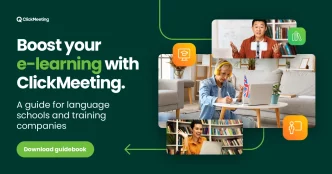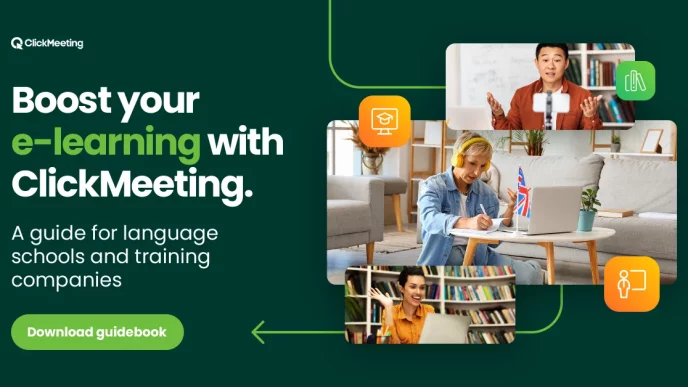Are you struggling to keep your virtual meetings on track and productive? A well-organized meeting agenda is key to success in this regard. But how do you actually make one?
Never fear! In this article we’ll teach you everything you need to know to craft a stellar meeting agenda, keep your video conferences on point, and achieve your meeting’s goals.
It doesn’t matter if you’re planning a team discussion, hosting a client presentation, or something else. A clear and concise agenda is essential. Let’s get started!
Table of Contents
Why Should You Create a Meeting Agenda?
Before we cover how to create an effective meeting agenda, let’s talk about why you should.
You wouldn’t take a cross country trip without GPS, would you? Neither should you start a virtual meeting without a detailed meeting agenda. Having one will help you:
Define Your Objectives
What do you want your meeting to achieve?
Clear objectives are crucial. Without them, your virtual meetings will be unfocused, unproductive, and ultimately, ineffective. These are three things you definitely don’t want.
Fortunately, a meeting agenda will help you define the purpose of your get-together, providing you and your attendees with a sense of direction that will keep everyone engaged.
Identify Your Target Audience
Who will attend your meeting?
When you understand the composition of your audience, you can tailor your content to meet their specific needs and preferences. This almost always leads to better results.
A meeting agenda will help you consider the diverse perspectives and expertise of your attendees. You’ll then be able to pick talking points that move your organization forward.
Establish Clear Expectations
How should attendees handle themselves during your meeting?
You might want participants to prepare something before they join your video conference. Or engage with your content in a specific way. You need to make these desires clear.
A meeting agenda will help establish clear expectations, and give participants a comprehensive understanding of meeting topics, the roles they’ll play, and the outcomes you’re anticipating. These things will minimize ambiguity and streamline the flow of your virtual get-together.
Preparing Your Meeting Agenda
Now that you know why you should create a meeting agenda, you can get started on the task. Doing so will lead to a more productive gathering. Here’s how to get the job done:
Choose Agenda Items and Set Timeframes
First, choose items to cover during your meeting; then set specific timeframes for each.
This will help you and your team stay focused, ensure essential topics are given the appropriate amount of time, and prevent your get-togethers from lasting too long.
To choose the right meeting agenda items, refer back to your objectives. What do you want to achieve? Select talking points that will lead to desired outcomes. To set timeframes, be honest with yourself: how long do you realistically need to cover each specific topic?
Incorporate Buffer Time for Discussions
After reading this article, you’ll be able to craft crips and effective meeting agendas. But that doesn’t mean you’ll follow them 100% of the time. You’re bound to get off base now and again.
This is why you should always incorporate buffer time into your schedule. Doing so will give you flexibility. You’ll have the space you need to go off on unexpected tangents or have in-depth conversations—without worrying that your meeting will run over time.
Buffers will also provide participants with an opportunity to address lingering questions or concerns, which will promote a more comprehensive understanding of the topics at hand.
Structuring Your Agenda Content
At this point, you have a basic outline for your video conference. It’s a good start, but it’s not good enough. Next, you need to structure each of the meeting agenda items you’ve set.
Why is this so important? It will help you prioritize content, ensuring the most important topics are covered. That way, if you run out of time, your meeting can still be considered a success.
Here are two tips you can use to structure your virtual meeting content effectively:
Outline Key Discussion Points
Dig deep into each item on your meeting agenda to pull out specific discussion points.
For example, you might want to “talk about our current content marketing strategy“. This is a broad topic, so it makes sense to break it down into a few key points, such as: “analyze blog performance,” and “receive updates on our new ebook,” and “study podcast metrics”.
A clear outline with important discussion points will give you a detailed roadmap for your meeting. With this roadmap, it will be much easier to keep everyone on the same page. It will also help you maintain the flow of your meeting and prevent unproductive bunny trails.
Assign Responsibilities for Each Item
Next, assign each of the key discussion points you’ve identified to a specific person.
While you could lead the entire meeting, this usually isn’t the best way. After all, you probably don’t have the expertise, data, or even desire to talk about each discussion item in detail.
By assigning responsibility to others in your meeting agenda, you’ll foster a sense of responsibility amongst your team, ensure participants are prepared to contribute, and achieve your meeting’s end goals with much greater consistency.
Including Supplementary Materials
In all likelihood, you’ll want to include supplementary materials to enhance your meeting content. We’re talking about reports, slideshows, visuals, and the like. Plan ahead and make sure these materials are included (or at least talked about) in your meeting agenda.
Attach Relevant Documents
Start with relevant documents. Are there any reports, slideshows, etc. that you want to discuss during your meeting? Attach them to your meeting agenda so all parties have access.
This simple step will give meeting participants an opportunity to review the materials in advance, helping them come prepared with questions or concerns. It will also allow for a more efficient use of meeting time, as everyone will be familiar with the content before the gathering starts.
Provide Pre-Reading Materials
What about pre-reading materials such as articles, research papers, and/or background information related to the topics to be discussed? This kind of collateral will help provide context to meeting attendees and ensure alignment between team members during your gathering.
Use Visual Aids
Just about every virtual meeting should include visual aids, like graphs, charts, and diagrams. Why? Because these materials can simplify complex topics. By integrating them into your presentation, you’ll be able to convey information more effectively, leading to better discourse.
The Post-Meeting Follow-Up
There’s one more item to add to your meeting agenda: the post-meeting follow-up.
To make sure your meetings are as effective as possible, follow-up with attendees after your gatherings conclude. That way you can keep attendees accountable and maintain momentum.
Here are two things that your post-meeting follow-ups should accomplish:
Summarize Meeting Outcomes
Put together a succinct summary of your get-together—what you and your attendees talked about, the action items assigned to each person, and specific deadlines (if applicable.)
This summary will serve as a reference point for all participants and provides a clear understanding of next steps. By consolidating the outcomes into a comprehensive document, it ensures that everyone is aligned and accountable for their respective tasks.
Request Feedback From Attendees
Finally, request feedback from meeting participants.
What did they like about your gathering? What can you do better to ensure a more productive and effective get-together in the future? You need to know the answers to these questions.
While it can be difficult to ask for feedback, it’s an important process. After all, you won’t know how to improve if you never learn about your shortcomings. In addition, feedback can help foster a collaborative environment that helps your team enjoy their work more. Win!
Enhance Your Virtual Gatherings With a Meeting Agenda
A well-crafted meeting agenda is crucial for a productive and efficient gathering.
By clearly defining your objectives, outlining the topics you’ll cover, allocating time slots, and assigning responsibilities, you can ensure your meetings stay on track and meet their goals.
As a reminder, share your meeting agendas with participants before your meeting actually starts, as this will give them a chance to prepare for the gathering and contribute effectively.
One more thing: if you’re still looking for a video conferencing tool to host your virtual meetings on, give ClickMeeting a try. Our platform is used by tens of thousands of people around the world because it’s intuitive and powerful. Sign up for a free 14-day trial today to see for yourself.










